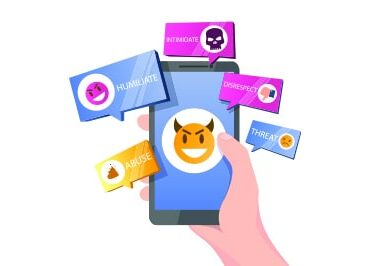How remote learning, increased screen time, and a considerable decrease in socialization affects students
By Janet L. Royal
By the time you read this article, we will have had more than a year of instruction and learning in a pandemic environment. Schools in New Jersey first closed in mid-March 2020. Since then some opened either fully or partially, then some had to close again because of COVID-19 cases—an ever-changing scenario that has been stressful for teachers, students and parents in a way that we could never have predicted.
With the increased time that students are spending online for school, there comes an increased potential for cyberbullying. Cyberbullying is defined as intentional and recurring detriment perpetrated through computers, cellphones and other electronic devices. Although this is different than in-person bullying, it is just as traumatizing—and often worse.
Some students have figured out workarounds that enable conversations between students without the teachers’ knowledge. Such bullying includes, but sadly isn’t limited to, exclusion, harassment, outing, dissing, and trickery. Here are some examples:
- Taking/sharing photos on social media to shame classmates.
- Sending damaging comments in the chat feature during virtual class.
- During virtual class, or even after class, using apps or gaming sessions to berate or embarrass classmates.
- Online posting of delicate, private or upsetting information without consent.
- Creating fake profiles to hide one’s real identity with the intention of cyberbullying.
- Logging onto another person’s social networking account and impersonating them, posting inappropriate content in their name.
In addition, not all students have access to a space in their home that they would want their classmates or teachers to see. They may even have to stream from a car or shelter if their family has been displaced, exacerbating issues of inequity and emphasizing disparities. Consequently, students may experience anxiety, depression and isolation. They may not turn on video their video or complete assignments.
Having conversations including students and parents will go a long way to minimizing cyberbullying in your virtual space, and in helping you gain insight into the ways in which your students choose to interact in a virtual space. Often simply taking the time to talk will reveal what is really going on with the “bully” and will inform decisions about how to proceed to help all parties. Students should know that it’s OK for them to report online bullying to their parents and their teachers without repercussions. This can happen by creating an environment of mutual respect in the classroom and teaching online etiquette.
Every district already has a bullying policy in place and there should be on-going conversations about it so that everyone is clear about what bullying is, what the consequences of bullying are, and how bullying can negatively affect individuals and groups now and in the future. Make sure you always keep the school counselor in the loop. Be sure to adhere to your school district’s incident-reporting policies and procedures.
Realizing that this new situation, which has caused instruction to move from the classroom to the home, has been a learning curve for educators and students alike and brought a level of stress that has affected everyone. We all have to find ways to be creative and even step out of our comfort zones in order to get through this. There is light at the end of the tunnel and working together, we will make it.
Janet L. Royal is an associate director in the NJEA Professional Development and Instructional Issues Division and is the coordinator for the annual NJEA Convention. She can be reached at jroyal@njea.org.
